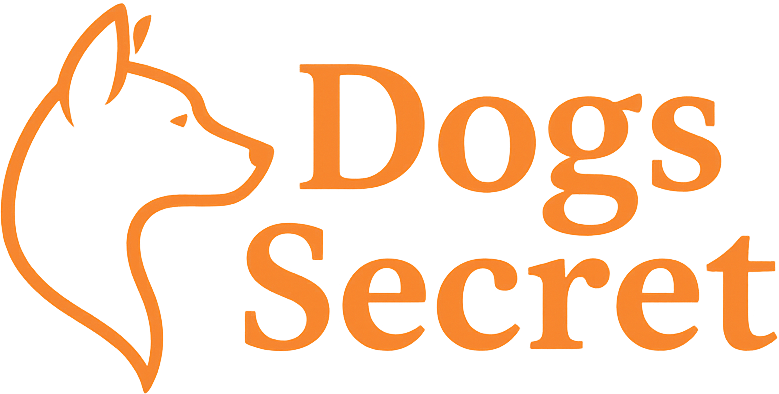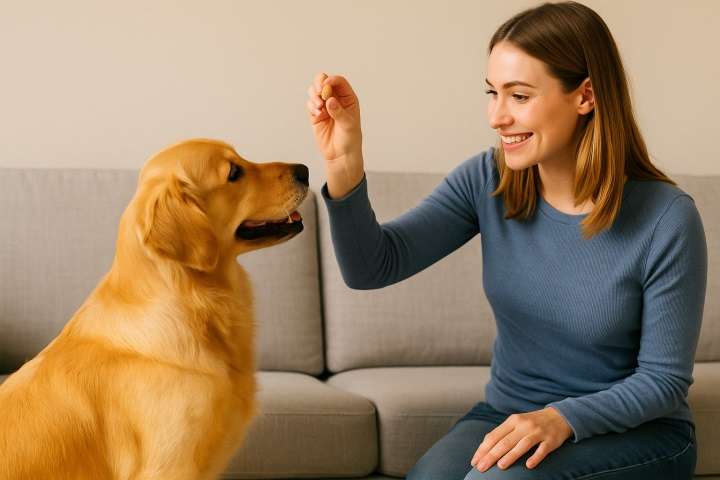If you want a well-behaved dog who’s eager to listen, trust you, and enjoy training, there’s no better method than positive reinforcement. Instead of punishing bad behavior, this modern, humane approach focuses on rewarding the good, making learning clear, fun, and stress-free for your dog.
In this guide, you’ll learn exactly what positive reinforcement is, why it works, and how to use it step by step to teach any dog—from basic obedience to advanced tricks.
What Is Positive Reinforcement Training?
Positive reinforcement training means adding something your dog likes (like a treat, toy, or praise) immediately after they perform a desired behavior, so they’re more likely to repeat it.
Example:
Your dog sits → You give a treat → Your dog learns sitting = reward.
It’s based on the science of operant conditioning and is the most recommended method by modern trainers, veterinarians, and behaviorists.
Why It Works
✅ Builds trust and motivation
✅ Improves learning speed and retention
✅ Prevents fear-based behavior
✅ Strengthens the dog-human bond
✅ Suitable for all breeds, ages, and temperaments
Dogs trained with positive reinforcement are not just obedient—they’re confident and happy learners.
Step-by-Step Positive Reinforcement Training
Step 1: Pick the Right Reward
Use something your dog genuinely loves. It must be valuable enough to compete with distractions.
Reward options:
- High-value treats (chicken, cheese, liver, etc.)
- Favorite toy or tug game
- Verbal praise and petting (for calmer dogs)
- Clicker (for precise marking)
Tip: The better the reward, the faster the learning.
Step 2: Mark the Behavior Immediately
Mark the exact moment your dog does the correct behavior.
How to mark:
- Use a clicker or a marker word like “yes!”
- Always follow the marker with a reward
- Be consistent—mark only when the behavior is correct
This helps your dog understand exactly what they did right.
Step 3: Start in a Distraction-Free Environment
Choose a quiet room where your dog can focus.
Training setup:
- Keep sessions short (5–10 minutes)
- Work on one skill at a time
- End on a success to keep your dog motivated
Once your dog masters the behavior, add mild distractions gradually.
Step 4: Teach Basic Commands First
Start with core obedience skills:
- Sit
- Down
- Stay
- Come
- Leave it
- Touch (target training)
- Look at me (focus)
Process:
- Lure or wait for the behavior
- Mark the behavior
- Reward immediately
- Repeat 5–10 times
- Add a verbal cue once the behavior is consistent
Step 5: Reward Calm Behavior Throughout the Day
Don’t limit positive reinforcement to training sessions.
Catch your dog being good:
- Reward when they sit calmly on their own
- Praise when they ignore a distraction
- Offer a treat when they choose you over barking
This teaches your dog that good choices always pay off.
Step 6: Fade Out the Lure, Not the Reward
Once your dog knows the command:
- Remove the treat from your hand (no more luring)
- Use the verbal cue + hand signal
- Continue rewarding, but vary the type and timing
- Gradually reduce treat frequency—not praise or feedback
This keeps your dog responsive while building reliability.
What to Avoid
- ❌ Using punishment or harsh corrections
- ❌ Bribing (showing treats before the behavior)
- ❌ Training too long or too often
- ❌ Inconsistent cues or expectations
- ❌ Ignoring small successes
Positive training is about clear communication—not control.
Advanced Uses of Positive Reinforcement
Once your dog knows the basics, you can apply this method to:
- Trick training
- Agility
- Behavior modification (e.g., fear or reactivity)
- Off-leash reliability
- Cooperative care (grooming, nail trims, vet visits)
With the right foundation, anything is possible.
Conclusion
Final Thoughts on Positive Reinforcement Dog Training
Positive reinforcement isn’t just a training technique—it’s a philosophy based on respect, science, and trust. By rewarding the behaviors you want, you’ll raise a dog who loves to learn, listens with joy, and builds a lifelong connection with you.
Need printable training charts, reward ideas, or video tutorials? Visit our Positive Dog Training Toolkit to get started today.

